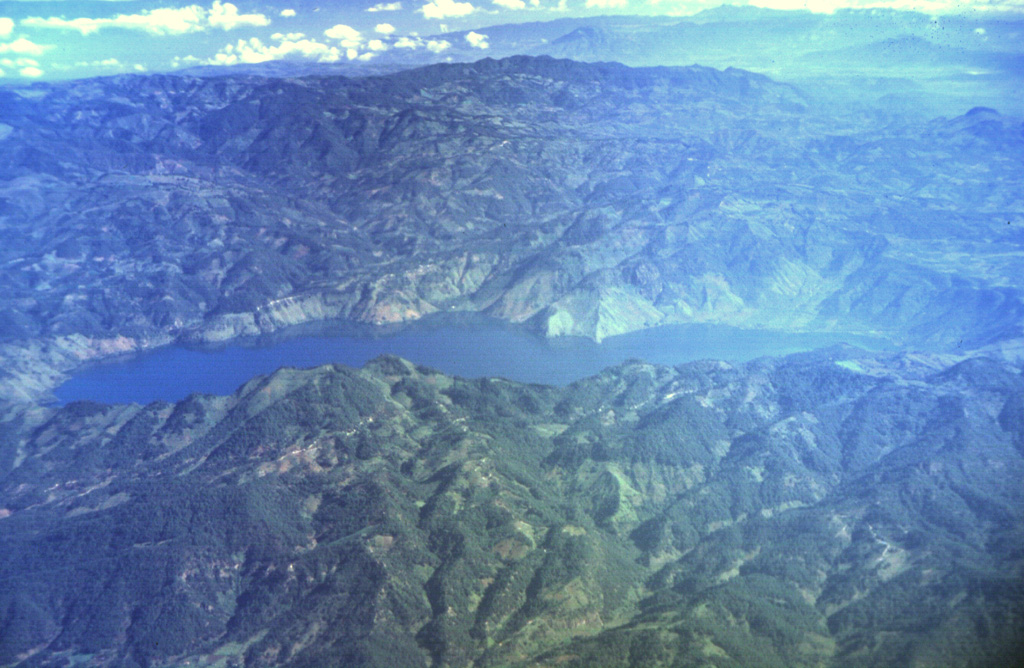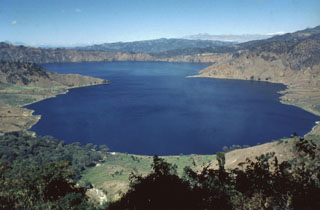Global Volcanism Program | Image GVP-07282

The figure-8-shaped Ayarza caldera appears elongated in this aerial oblique view from the SW. The double caldera was formed during two major rhyolitic eruptions about 27,000 and 23,100 years ago. These were among the youngest silicic eruptions in northern Central America. The larger western caldera (left) has a maximum depth of 240 m, and the eastern caldera is 140 m deep. Caldera walls rise an additional 300-600 m above the surface of Laguna de Ayarza.
Photo by Carlos Pullinger, 1996 (Servicio Nacional de Estudios Territoriales, El Salvador).
![]() This image is made available under the Creative Commons BY-NC 4.0 license terms.
This image is made available under the Creative Commons BY-NC 4.0 license terms.

Ayarza
